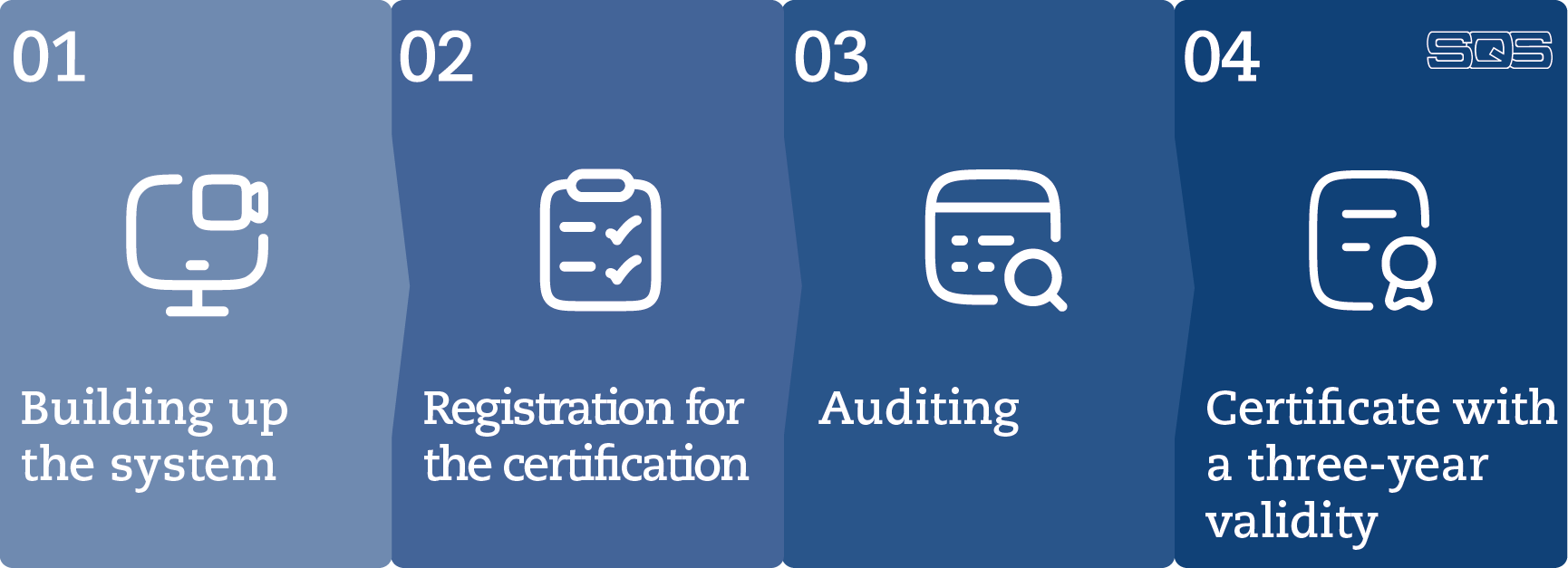ISO 38200:2018 – Chain of custody of wood and wood-based products
Customers across countries and industries demand proofs of sustainability for wood and wood-based products. Internationally known and recognised are certifications according to FSC® (Forest Stewardship Council®) and PEFC (Programme for the Endorsement of Forest Certification Schemes) as two private standards for chain of custody certification of products from sustainable forestry.
Less familiar is the international standard «ISO 38200:2018 - Chain of custody of wood and wood-based products» published in 2018.

Leading certification body in Switzerland

Recognised internationally for access to markets worldwide

We have been certifying management systems since 1983

Around 7 000 customers trust our Services
Guidelines ISO 38200:2018
ISO 38200 requires, among other things, that users provide evidence of the legality and traceability of all wood and wood-based products and their supply chains and also systematically check this evidence.
This also fulfils key requirements, such as the Swiss Timber Trade Ordinance (HHV) and the European Union's Deforestation Directive (EUDR). In addition, the standard allows you to make individualised statements about your products, provided that their truthfulness can be proven.
These individual statements have a high level of credibility thanks to the annual external review by a certification body. They can therefore be used ffectively to position your company and market your product.
Target groups of ISO 38200
Companies and organisations that trade in, market or process wood-based products (including paper, rubber, cork, pulp, wood fibres, cardboard, wood).
Validity period of the certificate
3 years - as part of the ongoing development process, a surveillance audit takes place annually and a recertification audit after 3 years.
Recognition of the SQS certificate
The SQS certificate confirms the verification according to an internationally recognised standard. ISO 38200:2018 also supports UN Goal 12 "Sustainable consumption and production “.
Responsible for the product and there for you

Felix Rinderle
Do you have any questions about the standard or our service? Would you like to know more about the certification process and the costs? Or may we provide you with a concrete offer for the certification?
We are happy to help you. Our account management team and I, as the product manager, will be happy to forward your questions to our experienced auditors. We want to make it as easy as possible for you to access certified management systems.
Please let us know how we can support you. We look forward to hearing from you!
Kind regards
Felix Rinderle
Traceability and transparency
ISO 38200 supports seamless documentation of the chain of custody of wood, cork and woody materials. This makes the entire value chain - from origin to end product - traceable, thus preventing misdeclaration and strengthening trust in your company.
Sustainable procurement and credibility
Thanks to the clear requirements of the standard, you can ensure that your wood comes from reliable sources. This promotes the image of a responsible company and facilitates access to new markets.
Efficient processes and risk mitigation
A standardised approach to the chain of custody certification reveals weak points in the supply chain. This reduces errors, minimises legal risks and creates clear processes for all parties involved.
|
Advantages |
Disadvantages/restrictions |
|---|---|
|
|
If you feel fit for the standard, you are welcome to use the form above to register for certification. Otherwise, your path to ISO 38200 certification could look like this:

#1 – Building up the system
Implement your management system in accordance with the requirements of the standard so that you are ready for your first external certification audit by SQS.
#2 – Registration for the certification
After registering for certification, you can benefit from a preliminary talk or pre-audit. The pre-audit identifies system-relevant gaps and enables efficient certification.
#3 – Auditing
We first review your system documentation, assess your readiness for certification and draw up a detailed audit plan together with you. Our auditors then visit your company to assess the relevant test objects and the maturity degree of the management system and compile a report.
#4 – Certificate with a three-year validity
If the report is positive, you receive the certificate in digital and printed form. You can communicate it internally and externally for three years. Annual audits ensure compliance with the standard and enable continuous improvements. A comprehensive recertification takes place after three years.
ISO 38200 provides a more general framework for chain of custody certification and allows for individual statements about materials and products. FSC and PEFC, on the other hand, focus on sustainably managed forests and include specific ecological and social requirements. Unlike ISO 38200, they can be used as product labels. Depending on customer requirements, companies can also combine both approaches.
No. ISO 38200 does not provide for a separate label. The main focus is on the traceability and credibility of the data. The warranty mark refers to the chain of custody and not to an individual product.
As a rule, a certificate is valid for three years, with annual surveillance audits. At the end of these three years, a recertification audit is carried out to ensure continued conformity. The actual duration until initial certification depends primarily on the size of the company and the complexity of the chain of custody.
The costs vary depending on the size of the company, the number of locations and the scope of the chain of custody. On request, we would be happy to provide you with a customised offer.
SQS, as a certification body, independently verifies whether your management system meets the standard requirements and issues the certificate if the result is positive.
If non-conformities are identified during the audit, the company is given a deadline to initiate corrective measures. If these remain insufficient, no certificate can be issued or maintained.
No, our core competence is certification. However, if required, we will be happy to connect you with external experts or organise training courses so that you can optimally prepare for certification.
The standard promotes transparency and traceability throughout the supply chain. Companies can focus on sustainable sources and short transport routes, which not only reduces the ecological footprint but is also increasingly in demand on the market.
By documenting the entire chain of custody and verifying the legality and origin of the materials used, a company can more easily fulfil key requirements of these regulations and provide evidence of legally compliant procurement.
